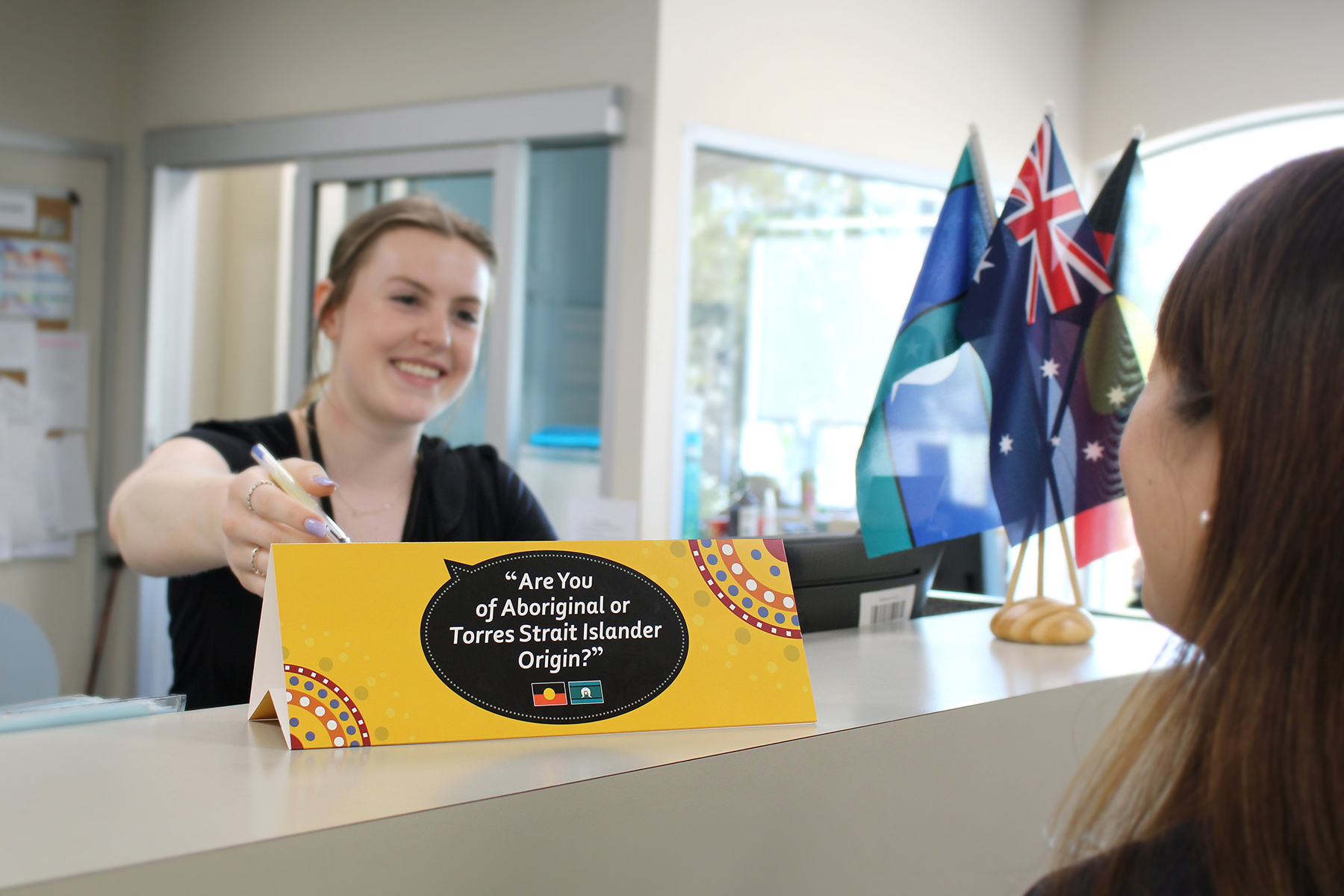‘Asking the Question’ resource launched
IEH are pleased to launch the ‘Asking the Question’ resource – a desktop resource that can be used on a reception or consulting desk as a simple prompt to ensure the question ‘Are you of Aboriginal or Torres Strait Islander Origin’ is asked.

There has been much progress in reducing the eye health gap between Aboriginal and Torres Strait Islander Peoples and other Australians over the past decade 1,2,3, however a number of eye health inequities and outcomes continue to exist. An estimated 94% of vision loss among Aboriginal and Torres Strait Islander Peoples is preventable and treatable, though barriers of access to and utilisation of services remain. These are reflected in lower rates of eye examinations and treatments, and inequitable waiting times compared with other Australians.
The identification of Aboriginal and Torres Strait Islander status can have a significant positive impact for Aboriginal and Torres Strait Islander eye health outcomes, enhance cultural safety, and ensure that patients can access appropriate pathways to care. Additionally, improving reporting and monitoring of access to eye health services through identification of Aboriginal and Torres Strait Islander status is an essential step to close the gap for vision.
IEH has developed a ‘toblerone’ desktop resource* that can be used on a reception or consulting desk as a simple prompt to ensure ‘the question’ is asked. IEH encourages local community adaptations of the ‘toblerone’ desktop resource* and development of other resources to prompt and support ‘asking the question’.
Read more about ‘Asking the Question’ resource
*Acknowledgment:
- Indigenous Eye Health, University of Melbourne has used with permission the existing wording and artwork from the ‘Have you Asked the Question?’ Joint project by North East Healthy Communities (previously North East Primary Care Partnership) and Victorian Aboriginal Health Services (VAHS).
- IEH acknowledges a number of key informants who provided input to the further development of the resources.
- IEH also acknowledges the support of Optometry Australia, Royal Australian College of Ophthalmologists and Vision 2020 Australia in disseminating and encouraging the use of this resource.
References:
- Taylor HR, National Indigenous Eye Health Survey Team. National Indigenous Eye Health Survey. Melbourne: Indigenous Eye Health Unit, The University of Melbourne 2009. Available at: https://mspgh.unimelb.edu.au/__data/assets/pdf_file/0004/1984144/niehs_full_report.pdf
- Foreman J, Keel S, van Wijngaarden P, Crowston J, Taylor H. R, and Dirani M. The National Eye Health Survey 2016. Available at:http://www.vision2020australia.org.au/resources/national-eye-health-survey-report/
- Australian Institute of Health and Welfare. Indigenous Eye Health Measures 2018. Cat. no: IHW 210. Available at: https://www.aihw.gov.au/reports/indigenous-australians/indigenous-eye-health-measures-2018/contents/summary